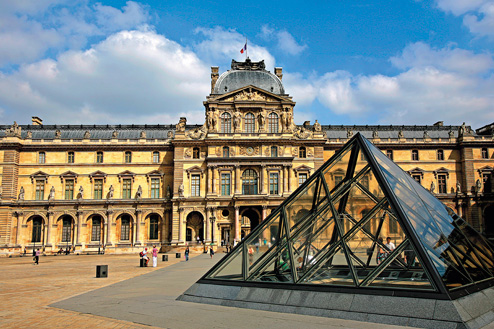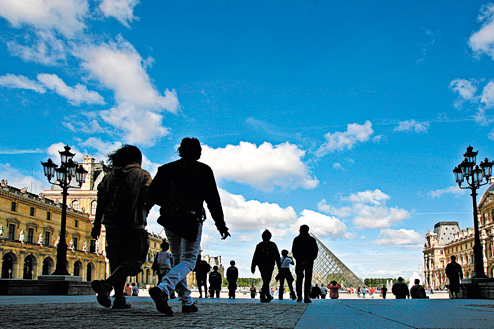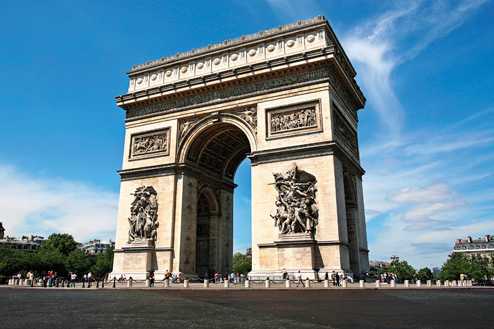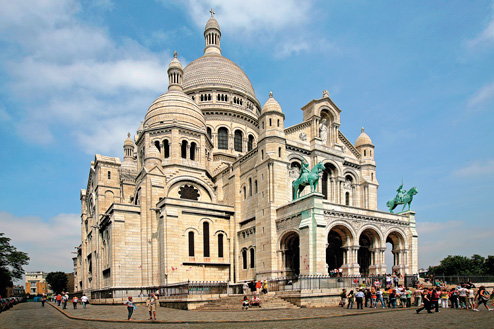St-Germain
While you can easily drift here along the boulevard St-Germain, the scenic approach is over the Pont des Arts footbridge from the Louvre. Facing you on the Left Bank, the 17th century domed building is the Institut de France, where the nation’s brainiest boffins and bigwigs take their seats among five Academies (the best-known of them, the Académie Française struggles, Cnut-like, to defend the French language from the tide of anglo-saxon words). On weekdays, it’s possible to go inside and visit the opulent Bibliothèque Mazarine (01 44 41 44 06), but you’ll need ID and photos to apply for a visitor’s pass. Close by, the former Mint now houses the Musée de la Monnaie (01 40 46 56 66), a high-tech affair charting French currency from Gallo-Roman times. If this doesn’t inspire you, the Musée des Lettres et de Manuscrits (01 40 51 02 25) has much broader appeal; it contains work penned by a pantheon of greats, including Beethoven, Einstein, Ghandi and de Gaulle. It’s tucked away behind Hôtel de la Monnaie, though the entrance is on rue de Nesles.
This is a lively and attractive area, which gets more fashionable as you thread your way west. There are tempting boutiques along rues Dauphine and Mazarine and a cluster of cafes around the classy food market on rue de Buci. On rues Jacob, Bonaparte and l’Abbaye, interior design shops, antiquarian booksellers and Ladurée’s confections all vie for your attention. A host of private galleries on the approach towards the École des Beaux-Arts makes this an art browser’s paradise.
Indeed, there’s no escaping art in one form or another. There are echoes of the past in the hotel where Oscar Wilde quipped his last (L’Hôtel); in the little green square where Picasso paid tribute to his friend, Apollinaire with a sculpture of Dora Maar; in the pretty house on rue Furstenburg, where Delacroix lived and worked. But they’re loudest of all at the Café de Flore and Les Deux Magots on boulevard St-Germain. These two cafes were frequented by Dali, Sartre, Beauvoir, Camus and Hemingway in their time – now a stream of tourists pay for the privilege. Brasserie Lipp can claim similar credentials. Nearby, the 11th century St-Germain church has seen it all.
This is a lively and attractive area, which gets more fashionable as you thread your way west. There are tempting boutiques along rues Dauphine and Mazarine and a cluster of cafes around the classy food market on rue de Buci. On rues Jacob, Bonaparte and l’Abbaye, interior design shops, antiquarian booksellers and Ladurée’s confections all vie for your attention. A host of private galleries on the approach towards the École des Beaux-Arts makes this an art browser’s paradise.
Indeed, there’s no escaping art in one form or another. There are echoes of the past in the hotel where Oscar Wilde quipped his last (L’Hôtel); in the little green square where Picasso paid tribute to his friend, Apollinaire with a sculpture of Dora Maar; in the pretty house on rue Furstenburg, where Delacroix lived and worked. But they’re loudest of all at the Café de Flore and Les Deux Magots on boulevard St-Germain. These two cafes were frequented by Dali, Sartre, Beauvoir, Camus and Hemingway in their time – now a stream of tourists pay for the privilege. Brasserie Lipp can claim similar credentials. Nearby, the 11th century St-Germain church has seen it all.













